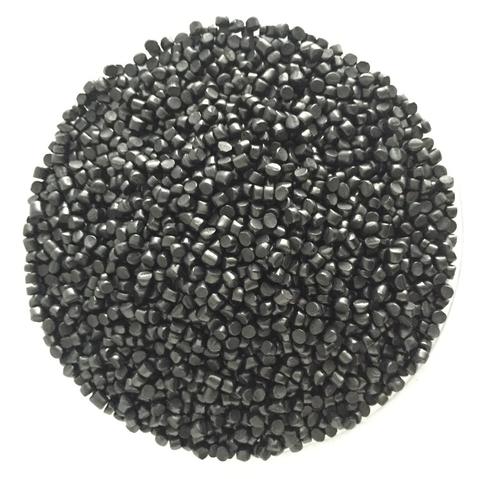Introduction to the Forming of Conductive Plastics
1. Forming of structural conductive plastics
The stability and processability of structural conductive plastics are still the main issues in industrial production and practical applications. Most of the structural conductive polymers developed in industry are unstable and prone to decomposition when heated. Some are highly sensitive to oxygen, while others may lose their original performance during storage. And they are not melted or soluble, so they cannot be well dispersed in organic solvents or viscous resins, so there is no fixed molding method. To solve this problem, polymer blends have been developed abroad to improve their stability and processability. Alternatively, soluble polymers can be prepared to be processed into pancreas in solution, or copolymerization and grafting methods can be used, Introducing processable components. In recent years, conductive polymers that can be formed using thermoplastic processing methods have been developed, leading to breakthroughs in processing and application. It is expected that more new varieties will be developed that can be processed before doping and stabilized after doping.
2. Forming of composite conductive plastics
For composite conductive plastics, existing plastic processing and forming methods can be adopted The conductivity of conductive plastic products processed by extrusion, injection, lamination and other methods can fully meet the requirements for use.

3. Forming of conductive plastic filling
This type of conductive plastic is formed by dispersion composite method. The conductive filler and basic resin are mixed evenly in a kneading machine, then extruded into pellets, and then the pellets are formed using appropriate methods.
4. Forming of metal fiber based conductive plastics
a. The direct method involves adding metal short fibers directly to the basic resin, and the process is the same as filling conductive plastics. It is also possible to add conductive fillers while adding metal fibers. There are no restrictions on the use of metal short fibers, and both metal fibers and gold fibers made by wire drawing or melt spinning methods can be used.
b. The master batch method involves bundling the long fibers of gold shavings with a bundling agent, and then cutting them into slices (master batches) with a length of 5-15ram. The slices are then mixed or kneaded with basic resin to evenly disperse; Metal long fibers of various materials can be used. Ideal fiber length> 100ram, diameter< 5 meters (preferably 7 headlands), with a dosage of 4-8, and a suitable proportion of 20-70 when mixed with the bundle agent.
The commonly used beam forming agents are thermoplastic resin solutions or cracking liquids. When mixing bundle slicing with basic resin, low-speed and low shear stress equipment should be selected.
c. The BMC method involves weaving metal long fibers into a mesh fabric (volume palate or silk blanket) using prefabricated integral molded plastic, and then placing them on two layers of plastic substrate to press and shape. The woven fabric can also be baked and molded with resin solution, and the woven mesh can be injected into a pre embedded mold (including double-layer injection). The advantage of BMC method is that the metal silver carp fibers are not damaged during the processing, so they have good conductivity and can maintain conductivity during use.
d. The SMC method (sheet molded plastic) mixes multiple strands of metal long fibers with basic resin, undergoes repeated rolling and stretching to produce sheet molded plastic, which is then molded using a dry method. The SMC method is particularly suitable for thermosetting plastics.
The addition of metal fibers has a smaller impact on the performance of basic resins compared to the addition of conductive fillers, and has less damage and pollution to processing formability, equipment molds, and does not affect product coloring. At present, the electrical resistivity of metal fiber based conductive plastics can reach 10Q · cm. Electromagnetic shielding has high shielding efficiency and good overall performance. However, most metal fibers are expensive and can be used in bulk. Mixed metal fibers or mixed conductive fillers can be used to reduce costs, and their effectiveness often exceeds that of a single system.
Article source: Taishan conductive masterbatch
-
04-11
Taishan conductive PP masterbatch: How to use defoaming masterbatch?
Defoaming masterbatch is suitable for enterprises that use PE and PP recycled plastics for product production. The trace amount of moisture contained in raw materials has a very serious impact on the
-
11-13
Characteristics and uses of conductive masterbatch plastics
Characteristics and uses of conductive masterbatch plastics1、 Characteristics of conductive masterbatch plastics:① Most plastics are lightweight, chemically stable, and will not rust;② Good impact res
-
10-13
What is PP talc powder masterbatch
What is the masterbatch of PP talc powder?PP talc powder masterbatch is a plastic modified filler, mainly composed of talc powder, which is a particle mixed with polymers or other carriers. It is main
-
08-09
Taishan Conductive Cloud Masterbatch Manufacturer Tells You Why to Use Conductive and Anti static Engineering Plastics
1. The fundamental physical properties of static electricity are:(1) Attracting or excluding;(2) There is a potential difference with the earth;(3) Discharge current will occur.These three characteris

